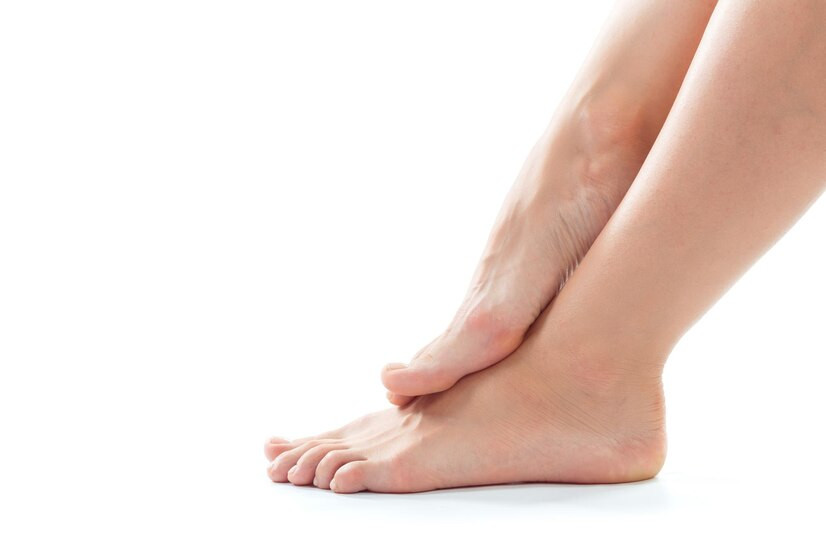Exploring Fallen Arches: Origins, Ramifications, and Remedial Approaches
Florence, United States - March 15, 2024 / Palmetto State Surgical Podiatry Associates /
Flat feet, also known as fallen arches, is a condition where the arches of the feet collapse, causing the entire sole to come into contact with the ground. This can lead to various issues such as pain, discomfort, and difficulty in walking or standing for long periods. Understanding the causes, implications, and treatment options for flat feet is crucial for those affected by this condition.
What Are Flat Feet?
Flat feet, or pes planus, is a common condition where the arches of the feet flatten, causing the entire sole to make contact with the ground. Normally, the arches of the feet provide support and help distribute body weight evenly while standing, walking, or running. However, in individuals with flat feet, this arch is either partially or completely collapsed, leading to various symptoms and complications.
Causes of Flat Feet
Genetics
One of the primary causes of flat feet is genetics. Individuals may inherit the tendency to have flat feet from their parents. If one or both parents have flat feet, there's an increased likelihood that their children will develop the condition as well.
Weak Arch Muscles
Weakness in the muscles that support the arches of the feet can contribute to the development of flat feet. When these muscles are unable to provide adequate support, the arches may collapse, resulting in flat feet.
Injuries
Injuries to the feet, such as fractures or dislocations, can damage the structures that support the arches, leading to flat feet. Additionally, damage to the tendons or ligaments in the foot can also contribute to the development of this condition.
Medical Conditions
Certain medical conditions, such as rheumatoid arthritis, obesity, diabetes, and cerebral palsy, can increase the risk of developing flat feet. These conditions can affect the structure and function of the feet, leading to the collapse of the arches.
Implications of Flat Feet
Pain and Discomfort
One of the most common implications of flat feet is pain and discomfort, particularly in the arches of the feet, heels, ankles, and lower legs. This pain may worsen with prolonged standing, walking, or physical activity.
Poor Posture
Flat feet can also affect posture, leading to improper alignment of the body. This can result in issues such as back pain, hip pain, and knee pain as the body tries to compensate for the lack of support from the feet.
Increased Risk of Injury
Individuals with flat feet may be at a higher risk of developing injuries such as shin splints, stress fractures, and plantar fasciitis due to the altered mechanics of their feet. Without proper support, the feet are more susceptible to overuse injuries during physical activity.
Treatment Options for Flat Feet
Orthotic Inserts
Orthotic inserts, or arch supports, can provide additional support and stability for individuals with flat feet. These inserts are placed inside the shoes to help maintain the arches and alleviate pain and discomfort.
Physical Therapy
Physical therapy exercises can help strengthen the muscles that support the arches of the feet, improving stability and reducing symptoms associated with flat feet. These exercises may include stretches, strengthening exercises, and balance training.
Footwear Modifications
Wearing supportive and properly fitting footwear is essential for managing flat feet. Shoes with good arch support and cushioning can help reduce strain on the feet and alleviate symptoms. In some cases, custom-made shoes or orthopedic footwear may be recommended.
Surgery
In severe cases of flat feet where conservative treatments fail to provide relief, surgery may be considered as a last resort. Surgical procedures aim to reconstruct the arches of the feet and restore proper alignment and function.
Conclusion
Flat feet can have significant implications for individuals, affecting their comfort, mobility, and overall quality of life. By understanding the causes, implications, and treatment options for flat feet, individuals can take proactive steps to manage their condition and alleviate symptoms.
FAQs
1. Can flat feet be cured?
While flat feet cannot be cured, they can be managed effectively with appropriate treatment and interventions such as orthotic inserts, physical therapy, and proper footwear.
2. Are flat feet common?
Yes, flat feet are relatively common and can affect people of all ages. It is estimated that around 20-30% of the population has flat feet to some degree.
3. Can flat feet cause back pain?
Yes, flat feet can contribute to poor posture and alignment, leading to back pain, hip pain, and other musculoskeletal issues.
4. Can flat feet affect athletic performance?
Flat feet can affect athletic performance by increasing the risk of injuries and reducing stability and efficiency of movement. However, with proper treatment and support, many athletes with flat feet can participate in sports and physical activities.
5. When should I see a doctor for flat feet?
If you experience persistent pain, discomfort, or difficulty with mobility due to flat feet, it's advisable to consult a doctor or podiatrist for evaluation and appropriate management.

Contact Information:
Palmetto State Surgical Podiatry Associates
230 Cherokee Rd
Florence, SC 29501
United States
Misty Lee
(843) 773-6246
https://www.palmettostatepodiatry.com/
Original Source: https://www.palmettostatepodiatry.com/media-room/#/media-room

